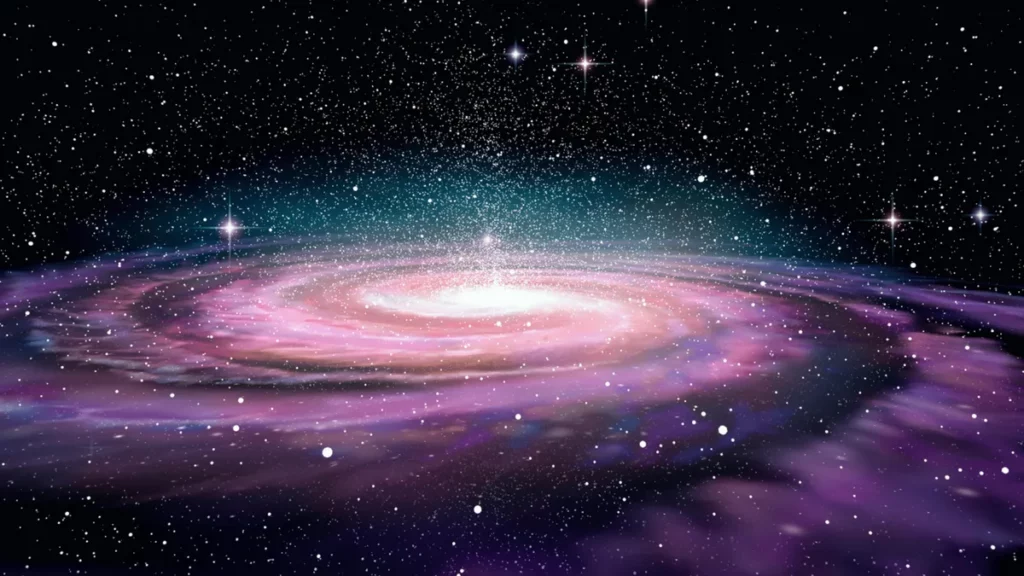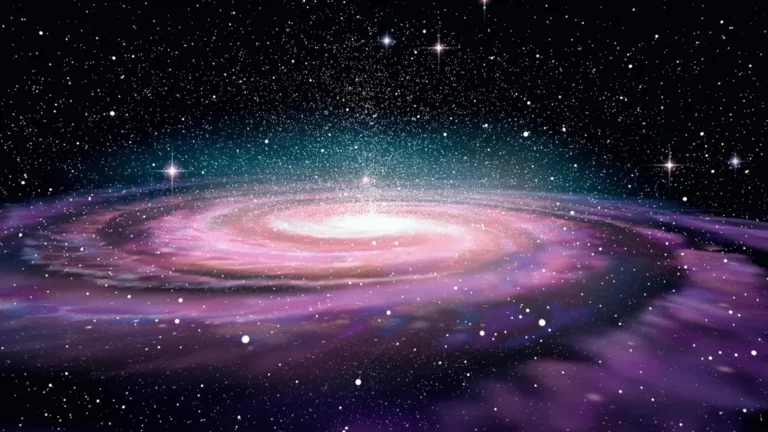JWST captures metal-rich galaxy that is 1.4 billion years old, ending the search.
Astronomers at Cornell University studying the inaugural image taken by NASA’s James Webb Space Telescope (JWST) of a well-known early galaxy, made a surprising discovery when they spotted a glowing mass of light near the galaxy’s outer boundary.

Initially, the infrared observatory was trained on SPT0418-47, one of the most brilliant galaxies in the early universe, which is characterized by its dusty, star-forming nature. The telescope’s objective was to scan this galaxy, but its distant light was curved and magnified into an “Einstein ring” by the gravity of a foreground galaxy.
Upon further investigation of earlier data from JWST, the astronomers made a fortuitous find: a companion galaxy that had been previously obscured by the brightness of the foreground galaxy. According to the scientists’ calculations, the galaxy is believed to be around 1.4 billion years old. Despite its relative youth, the galaxy has remarkably hosted several star generations.
Metal-rich galaxies in the early universe
According to Bo Peng, an astronomy doctoral student who led the data analysis, “We were taken aback by the unexpectedly high chemical abundance of this galaxy. JWST has changed our perspective on this system and opened up new avenues for studying how stars and galaxies formed in the early universe.”
Amit Vishwas, the paper’s second author, revealed that earlier images of the same galaxy captured by the Atacama Large Millimeter/submillimeter Array (ALMA) hinted at the existence of the companion galaxy that was confirmed by JWST. However, the ALMA images were nothing more than random noise.
Despite their mass and age, the most remarkable aspect of these two galaxies is their advanced metallicity, which refers to the abundance of elements like carbon, oxygen, and nitrogen that are heavier than hydrogen and helium. Their metallicity levels are quite similar to that of the sun.
Vishwas explained that “We are witnessing the remnants of at least a couple of generations of stars that lived and died within the first billion years of the universe’s existence, which is not typical.”
“We speculate that the process of forming stars in these galaxies must have been very efficient and started very early in the universe, particularly to explain the measured abundance of nitrogen relative to oxygen, as this ratio is a reliable measure of how many generations of stars have lived and died.”
“We’re still working on this galaxy,” Peng said. “There’s more to explore in this data.”
The full study was published in the Astrophysical Journal Letters and can be found here.
Study abstract:
We have made a significant discovery regarding the SPT0418-47 (“ring”), a strongly lensed galaxy at a redshift of 4.225 that was targeted by the JWST Early Release Science program. We have found two companion sources to the ring that are at a similar redshift, as confirmed by the detection of Hα in the NIRSpec spectrum and the [C ii] λ158 μm line from ALMA.
By utilizing multiple spectral lines detected in JWST/NIRSpec, rest-frame optical to infrared images from NIRCam and MIRI, and far-infrared dust continuum detected by ALMA, we have concluded that the newly discovered sources are actually lensed images of the same companion galaxy, referred to as “SE,” located within 5 kpc in the source plane of the ring. The star formation rate of SE, calculated using [C ii] and the dust continuum, is at least 17 M☉ yr−1, confirming that SE is a dust-obscured star-forming galaxy.
Optical strong line diagnostics suggest that SE has near-solar elemental abundance, while the ring appears to have supersolar metallicity O/H and N/O. We have proposed two possible explanations for the high metallicity in this system: the early onset of star formation with continuous high star-forming efficiency or the need to revise optical strong line diagnostics at high redshift.
Our analysis suggests that SPT0418-47 resides in a massive dark-matter halo with yet-to-be-discovered neighbors. This discovery underscores the importance of conducting joint analysis of JWST and ALMA data for a comprehensive understanding of the early universe.
Do not forget to share your opinion with us to provide you with the best posts !




Hello, I want to subscribe for this web site to get newest updates,
therefore where can i do it please help.
I’ve been browsing online more than 3 hours as of late, but I never found any attention-grabbing
article like yours. It’s lovely value sufficient for
me. Personally, if all website owners and bloggers made just
right content material as you probably did, the net will be much more helpful than ever before.
It is appropriate time to make some plans for the future and it’s time to be happy.
I have read this post and if I could I want
to suggest you few interesting things or suggestions.
Perhaps you can write next articles referring to this article.
I desire to read even more things about it!